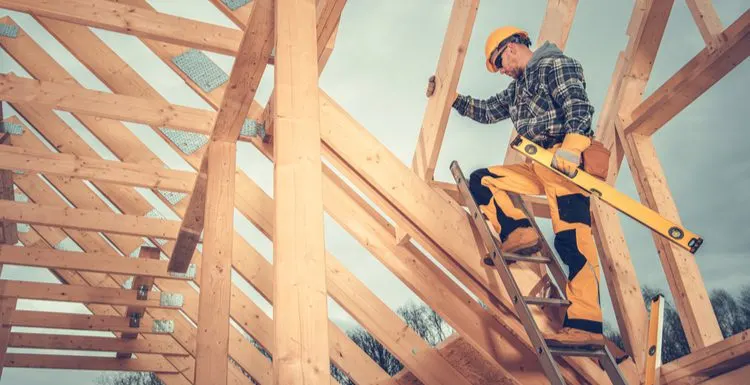Is it cheaper to build or buy a house?
It usually costs less to buy an existing house than to build a new one, but this can change depending on several factors.
Continue reading to find out what these are!
Is It Cheaper to Build or Buy a House?
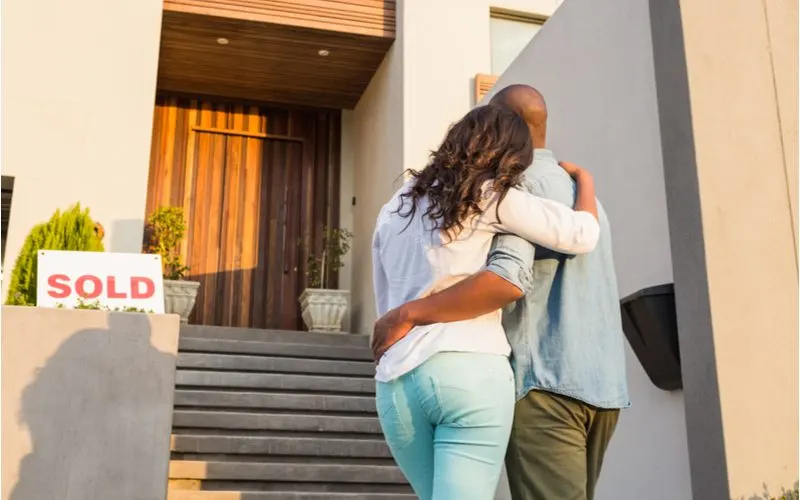
Wavebreakmedia/Shutterstock
The average cost of building your own home is more expensive than the average cost of buying a home in most states. However, in six states, the average cost of buying an existing home is often more than the cost of building a new home.
In most places, the average cost of building a new home is considerably higher than the average cost of buying a new home. Homes in the countryside or smaller towns are usually less expensive than in large metropolitan areas.
Of course, the location of your home within the city also affects the price. Even within the same city, the same home can cost more in a more desirable neighborhood.
The Average Cost of Building a New Home
According to the National Association of Homeowners (NAHB), the average cost of a 2600-square-foot house was $485,128 in 2019.
However, the cost of building a new home in 2021 is at a record high. Both lumber and building supplies are in short supply.
According to the NAHB, lumber prices have tripled since 2020. The increased price has added nearly $36,000 to the cost of the average single-family home.
Rising material prices have brought the average cost of building a new home in 2021 to $521,128.
However, as of August 2021, lumber costs had fallen 74% from their all-time high in May 2021. So, the cost of building a new home should go down again as long as materials continue to remain available and lumber prices stay low.
Loans for Building a New Home
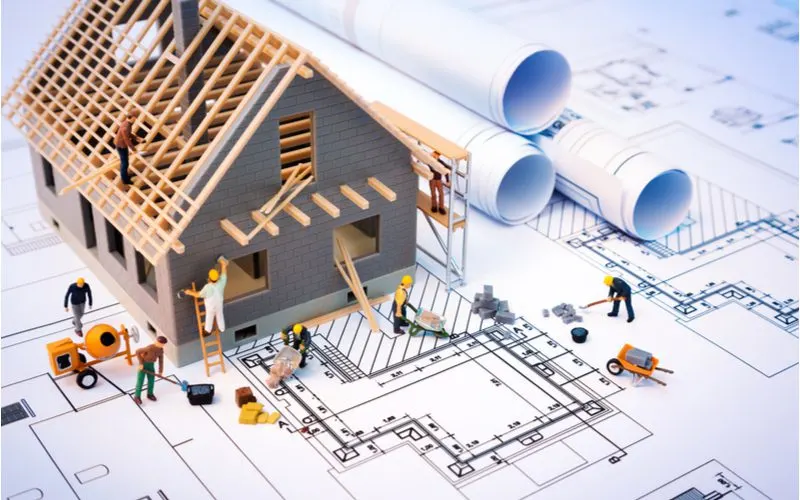
Romolo Tavani/Shutterstock
Home construction loans are short-term loans with higher interest rates than loans you can get to buy an existing home.
You will need to pay off most loans to build a new house within a year. This duration allows you time to build the home and receive a certificate of occupancy.
You will usually only need to pay the interest on a construction loan during the construction stage. Meanwhile, the lender will pay money out to you little by little as the home construction progresses.
Construction loans usually cover the following:
- Land cost
- Contractor labor costs
- Building materials
- Permits
- Appliances
- Landscaping
- A contingency reserve for unexpected costs
Don’t panic about the short loan period, though. If you choose a construction-to-permanent loan, the loan converts to a permanent mortgage (or end loan) after construction finishes.
After the loan converts to a permanent mortgage, the loan costs are the same as for buying an existing home (see the section about loans for existing homes below).
However, the added interest on the construction loan can add considerably to the total amount you end up paying.
The Average Cost of Buying an Existing Home
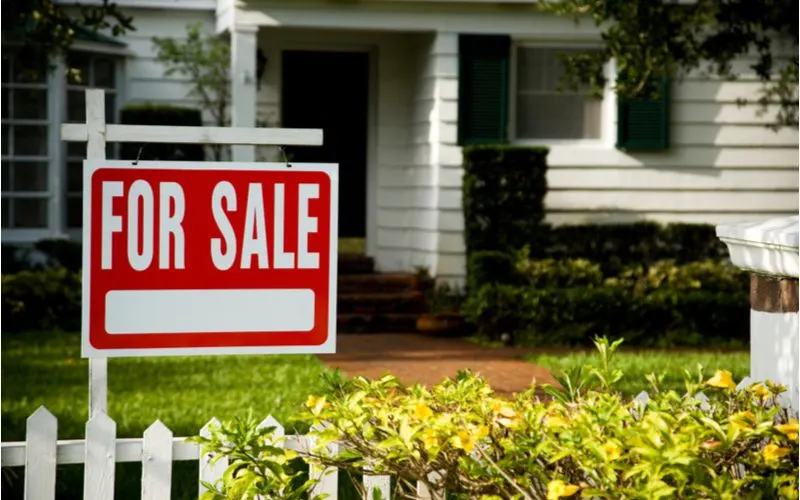
Juice Flair/Shutterstock
The National Association of Realtors reports that the median home sales price in 2021 will be $359,900. The cost of buying a home in 2021 is up 17.8% over 2000.
With the price of lumber at a high, the average cost of buying a new home is still cheaper than the average cost of building a new home in all but three states: California, the District of Columbia, and Hawaii.
As the cost of lumber returns to normal, it will also be cheaper to build a home than to buy a new one in Colorado, Massachusetts, and Washington, as well.
According to the Motley Fool, these are the typical home values in each state as of June 2021:
- Alabama: $170,184
- Alaska: $300,592
- Arizona: $355,540
- Arkansas: $149,120
- California: $683,996
- Colorado: $490,944
- Connecticut: $318,096
- Delaware: $308,067
- District of Columbia: $691,997
- Florida: $297,390
- Georgia: $245,778
- Hawaii: $730,511
- Idaho: $403,291
- Illinois: $233,661
- Indiana: $185,805
- Iowa: $165,955
- Kansas: $176,898
- Kentucky: $168,998
- Louisiana: $187,844
- Maine: $306,018
- Maryland: $366,581
- Massachusetts: $518,203
- Michigan: $208,337
- Minnesota: $301,576
- Mississippi: $140,818
- Missouri: $194,226
- Montana: $359,678
- Nebraska: $206,538
- Nevada: $368,254
- New Hampshire: $366,129
- New Jersey: $408,517
- New Mexico: $248,670
- New York: $371,880
- North Carolina: $248,950
- North Dakota: $246,588
- Ohio: $181,756
- Oklahoma: $150,754
- Oregon: $447,968
- Pennsylvania: $234,684
- Rhode Island: $372,809
- South Carolina: $225,406
- South Dakota: $242,923
- Tennessee: $231,682
- Texas: $247,210
- Utah: $465,012
- Vermont: $299,998
- Virginia: $328,640
- Washington: $519,552
- West Virginia: $117,768
- Wisconsin: $230,733
- Wyoming: $273,992
Loans for Buying an Existing Home
If you plan to buy an existing home, it’s a good idea to know what costs are involved upfront, which are included in your loan, and which come later.
You should expect to pay these costs upfront.
- Down payment: Down payments are usually 3% to 20% of the loan principal. The total depends on the home price, property type, and loan type. USDA and VA loans do not require a down payment.
- Closing costs range from 2% to 5% of the loan principal amount. Closing costs cover fees for application, appraisal, credit check, origination, and underwriting. They also include title searches and title insurance costs.
However, some lenders offer no-closing-cost mortgages so that you can add the closing costs to your loan principal. These costs are included in your monthly mortgage payments, separate from interest and principal.
- Property taxes
- Homeowner insurance
- Private mortgage insurance (usually required if you put less than 20% down on a conventional loan)
Things to Consider
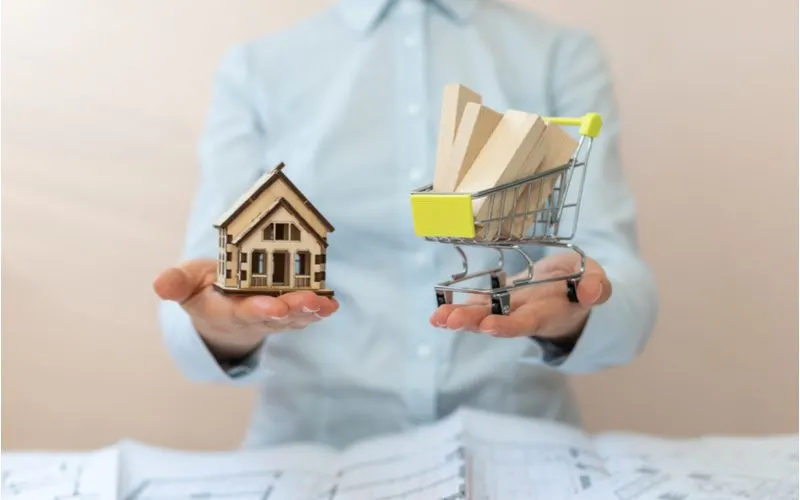
Brizmaker/Shutterstock
Here are a few cost considerations when deciding whether to buy a ready-made house or build a new house:
Buying an Existing House
- Is it usually cheaper than building a new house? In most states, it’s cheaper to buy a house than build a new one.
- Allows you to wait for a better price. You can choose to wait until housing prices are lower instead of finding yourself in the middle of a rise in the cost of materials.
- Your budget may not result in the house you want. When working within your price budget, you may not find the quality of home that you want in the location you prefer.
- May require a renovation budget: Homes in your desired location and price range may not be in good shape. If you don’t find exactly what you want, you may need to renovate or upgrade.
- May require funds for repairs sooner: The older a home is, the more likely it is that you will need to repair something sooner.
- It may cost more than the list price if the inspector finds surprises. Even if you find your dream home, the inspector may find things that need repair before your bank is willing to fund your loan.
- May result in higher utility costs: Older homes often have less-energy-efficient appliances and HVAC units.
Building a New House
- Is usually more expensive: In most locations, building your own home is more expensive than buying an existing home.
- Results in fewer initial maintenance costs: A new home should not need as much maintenance as an older home, especially if you choose quality materials and appliances.
- Can result in lower utility costs: If your home is well-insulated and energy-efficient, you should save money. If you opt for solar power, you can save even more.
- Also included is the cost of land. Buying land in a good location can sometimes be as expensive as buying a home in the same area.
- Doubles household costs initially: You will be paying both to live in your old home and for construction costs on your new home at the same time.
- And choosing upgrades increases costs: Every time you choose a fancy option rather than a basic option, the total cost of your house will increase.
- May include unexpected costs: Unexpected costs like increases in material costs, zoning issues, inspections, or weather-related problems can blow your budget.
- Includes outdoor costs: You may also have to pay for landscaping and pouring concrete for driveways, your part of the sidewalk, etc.
Frequently Asked Questions
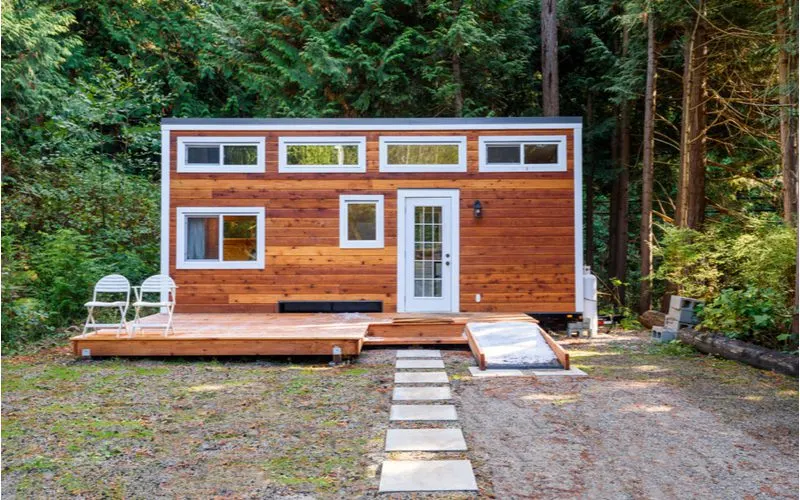
ppa/Shutterstock
Here are the answers to questions that many people ask when trying to decide whether to build or buy a house.
Is It Cheaper to Buy a House Kit or Build From Scratch?
House kits are cheaper than contractor-built homes. The most basic kits start at $10 per square foot. Kit homes are cheaper because kit makers buy their construction materials for less in bulk.
What Type of House is the Cheapest to Build?
Tiny houses are the cheapest to build because they only contain 100 to 400 square feet of floor space. According to Home Advisor, the average cost of a tiny house is $45,000. They typically range between $30,000 and $60,000.
Can You Build a Home for 70K?
You can build a small home for 70K. According to Forbes, $100 per square foot is the lowest cost to build a home. The average cost is $150 per square foot, and the highest average cost is $500 per square foot. So you could build a 700-square-foot home with $70,000 on a tight budget.
Is It Cheaper to Buy or Build a House?
Is it cheaper to build or buy a house? The average cost of building a new home is far more than the cost of buying a home in most states in 2021.
Not only is the final price important, but you will also want to think about the upfront costs, surprise costs, interest costs, and maintenance costs afterward.

